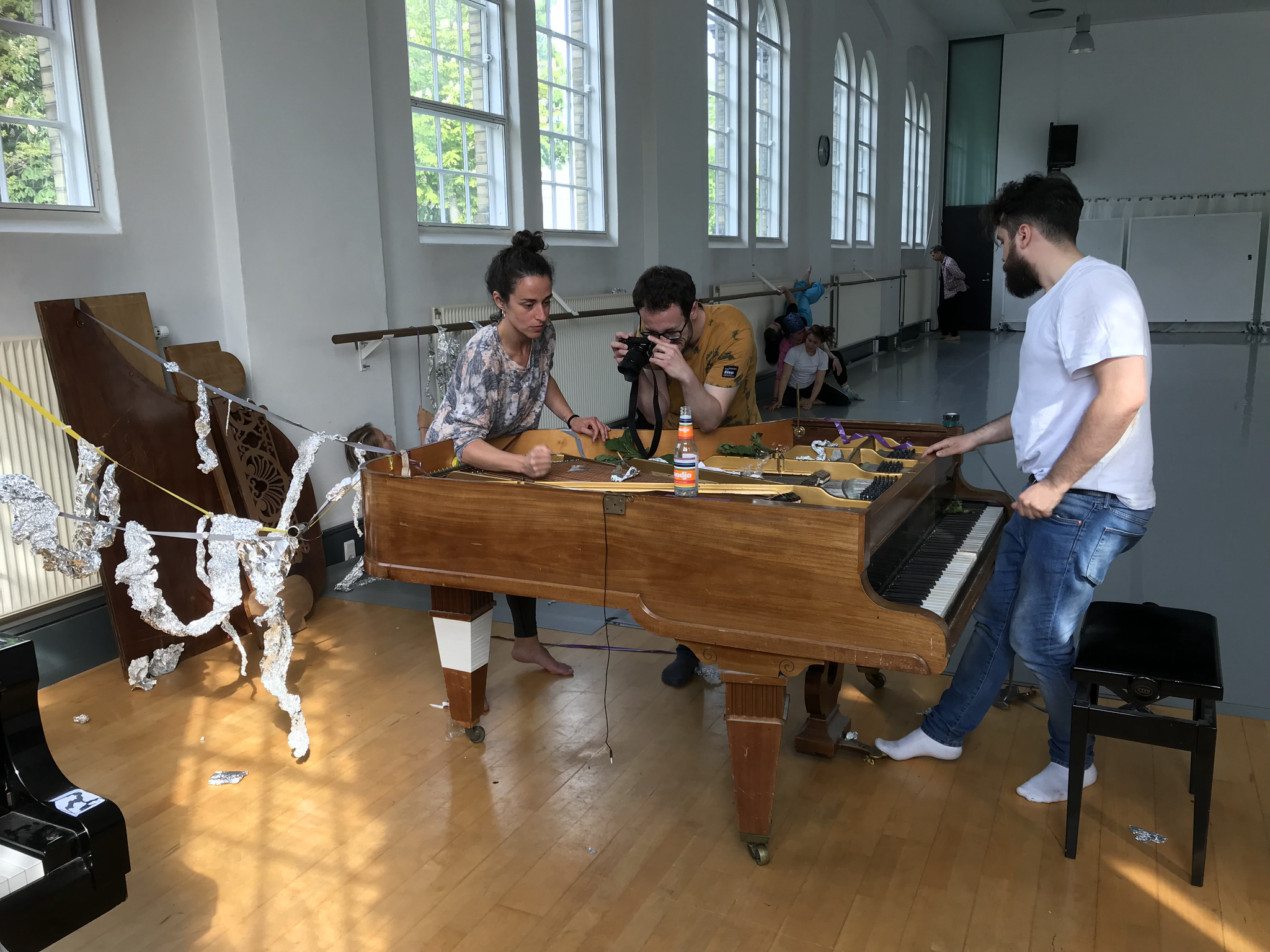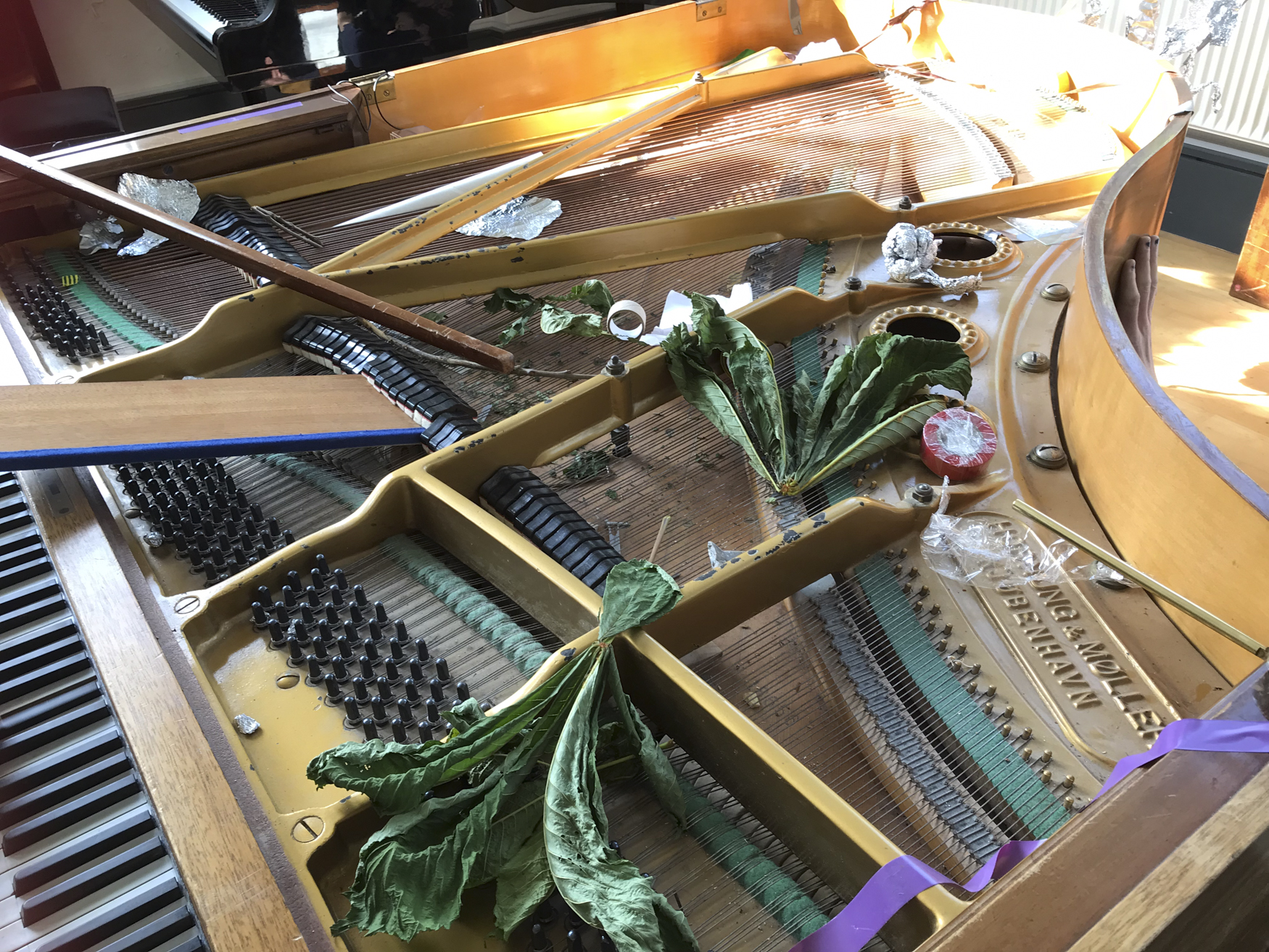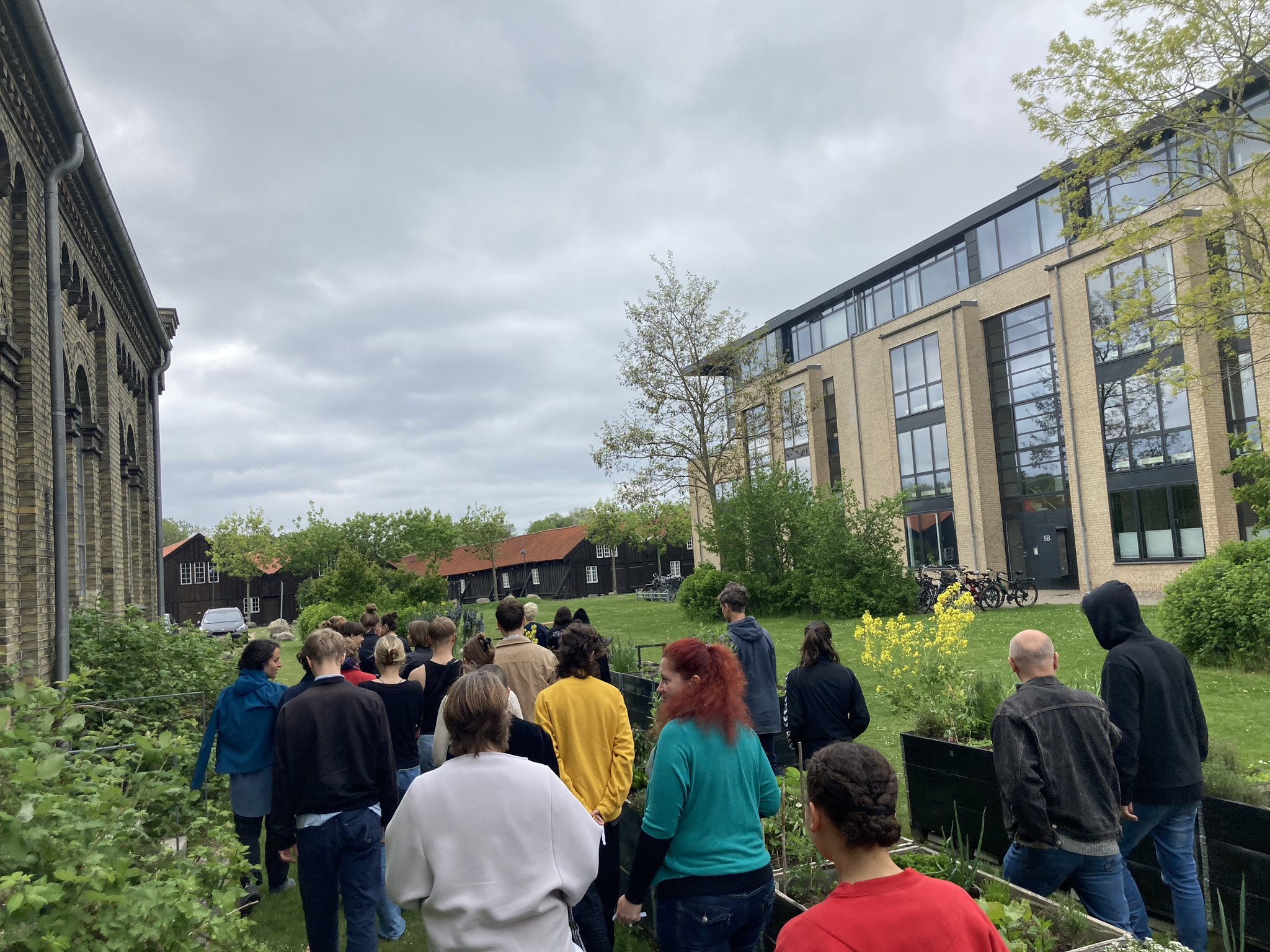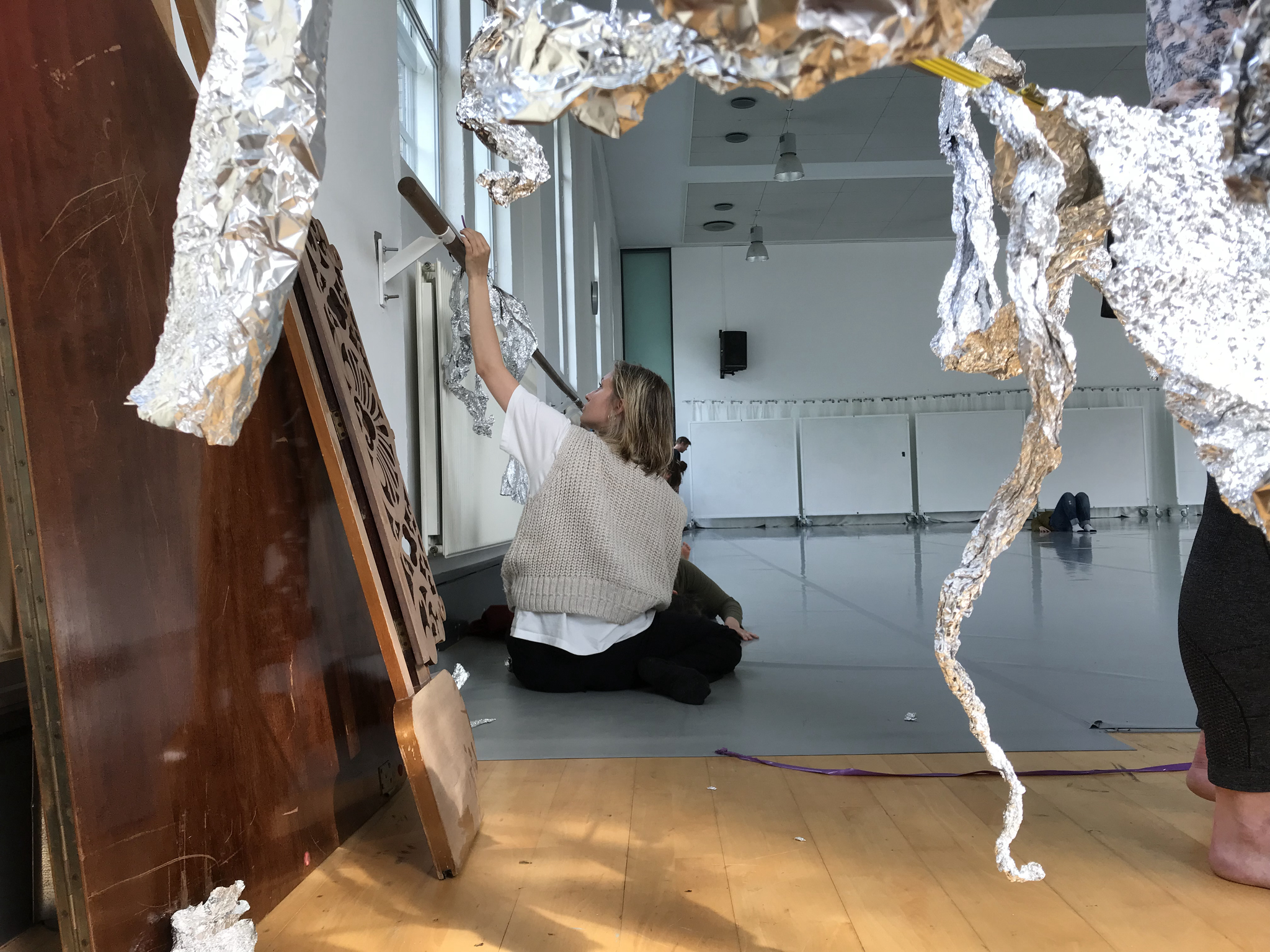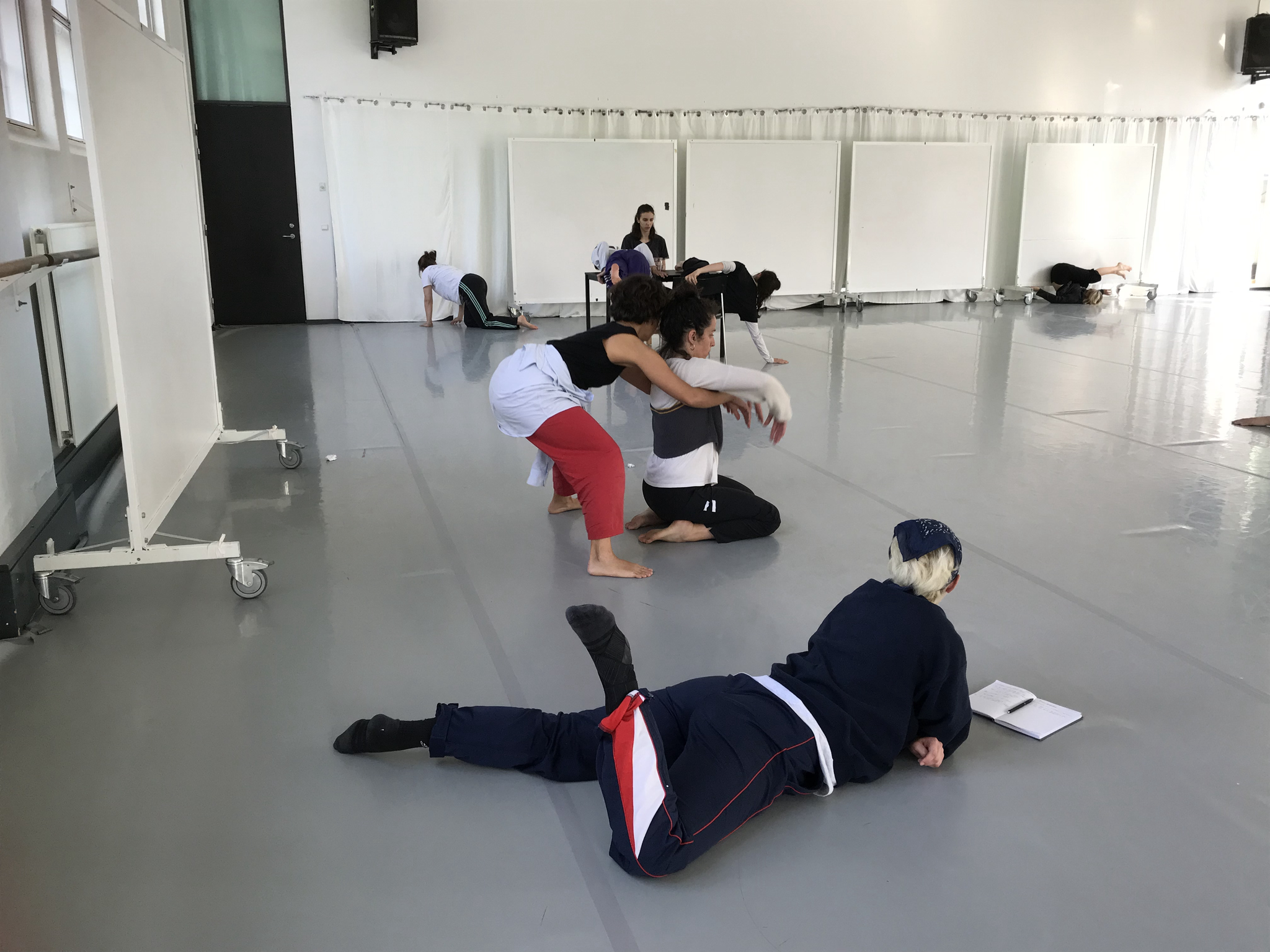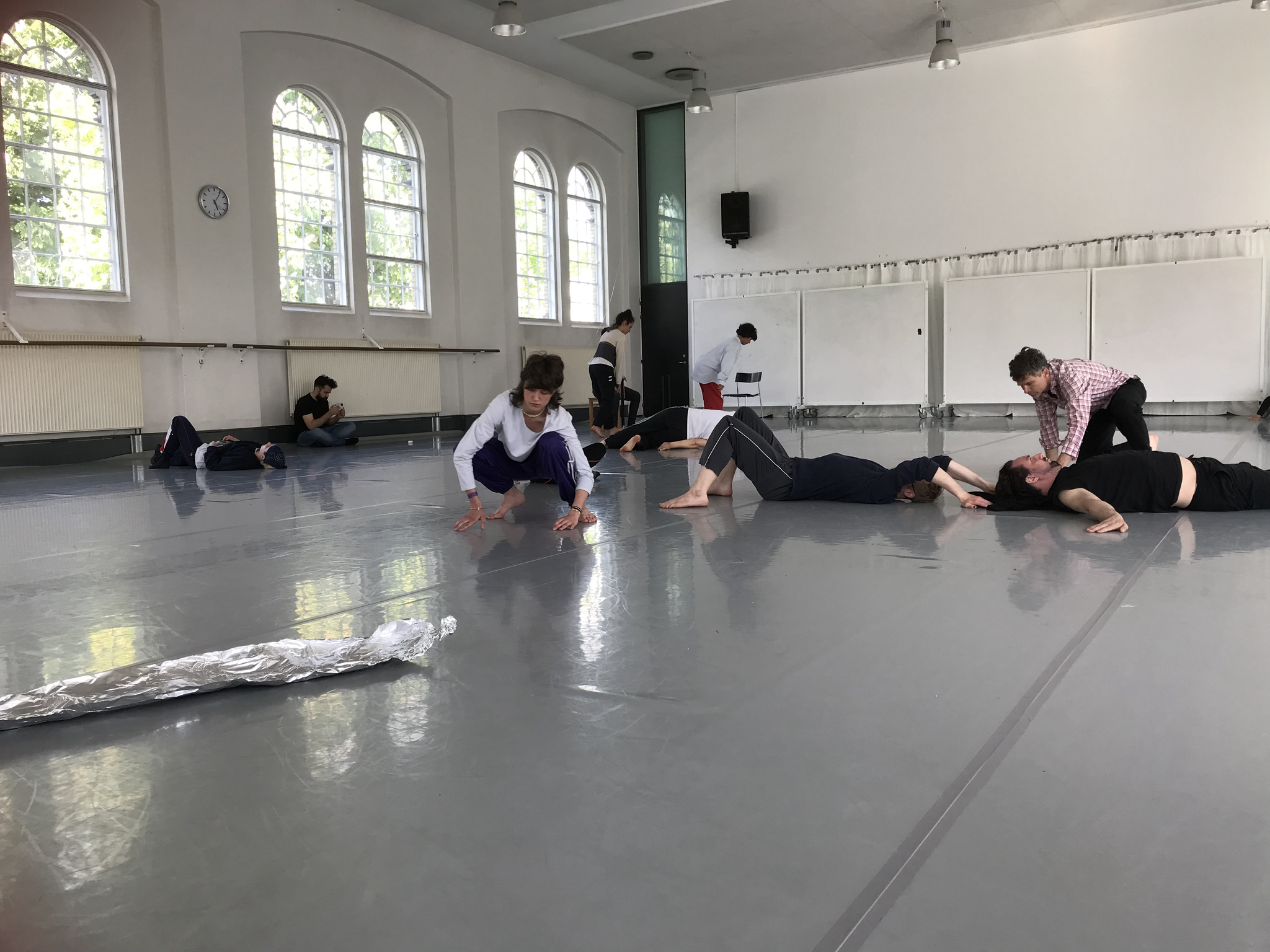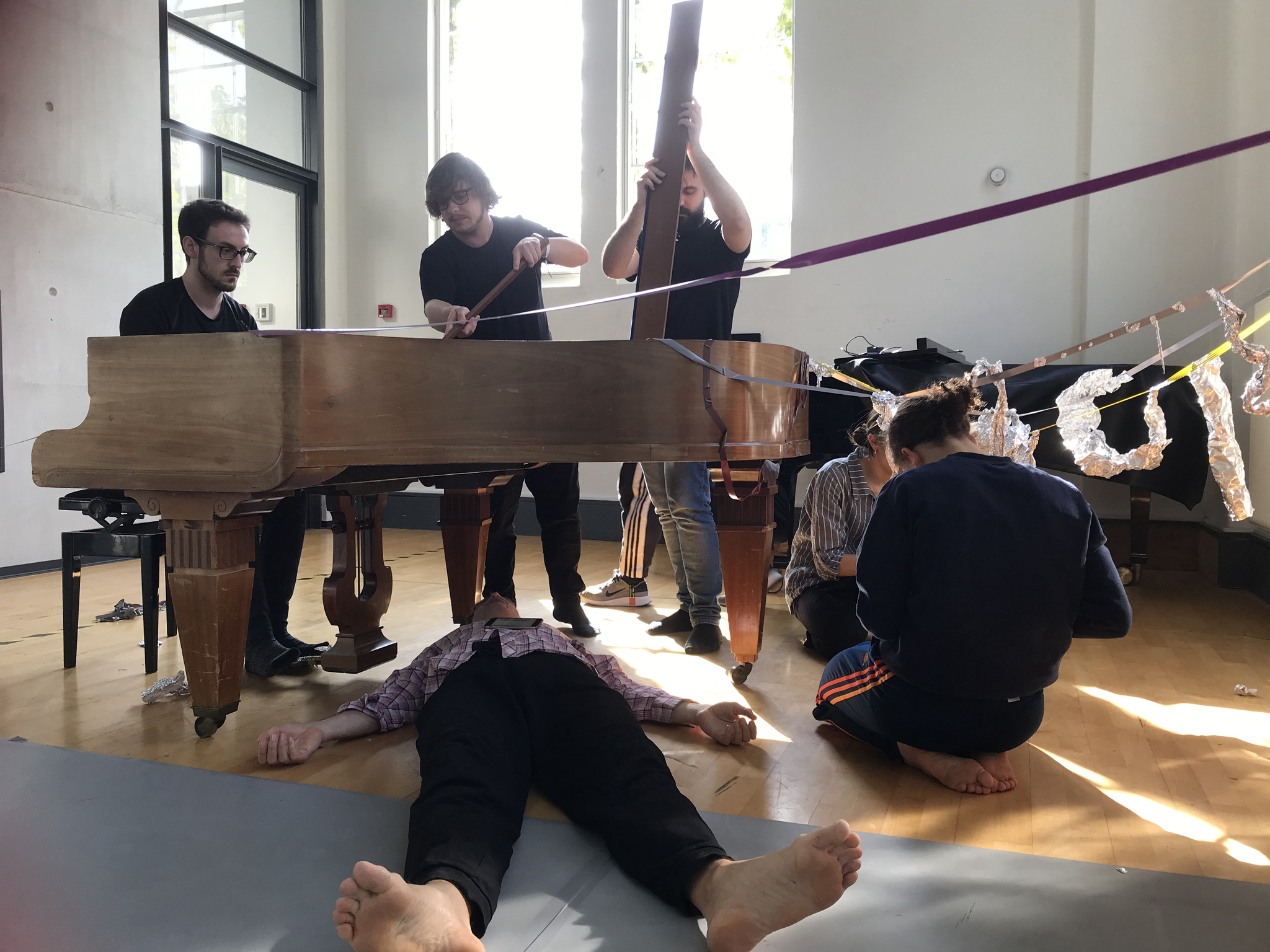The second encounter was conceptualized using the major principle of RELAY, understood as transitional. Instead of adding further content to the project, the activity explored what artistic (im)materials the project’s form could produce. The first day was spent introducing the schedule and activities, opening the Time Capsule from the first encounter in Cologne and dividing the participants into groups of both students and mentors. The following three days had the same schedule every day:
9.00-09.45 Physical Practice (guided by Max Wallmeier)
10.00-12.30 Group work SLOT 1
12.30-13.30 Lunch
13.30-16.00 Group work SLOT 2
16.30-17.30 Continuous Project Altered Daily
The group work slots took place in three different spaces: A large dance studio with sound installations, a seminar room and a workspace at Copenhagen Contemporary (an exhibition hall in the vicinity of the school). The “Continuous Project Altered Daily” was the work with the ARTwork and consisted of a jam, in which all groups participated and explored the materials they had been working with during the day.
On the last day, each group presented their work in the form of a performance followed by a Q&A. The final 2-hour sessions concluded the week into a form of re-mix of everyone’s materials. After the end of the common program, the students from Copenhagen assembled a selection of the final materials for the Time Capsule. The diverse elements included maps, scores, sculptures as well as QR codes and links. All of these were packed into a small suitcase which could easily be brought to the following encounter. The suitcase remained the container for all following Time Capsules.
After two years of preparations during the COVID pandemic, the second encounter was the first physical meeting with all RELAY partners. We could finally find ourselves together meeting, exchanging and witnessing the project unfold. It also meant that one important objective became to introduce the conceptual ground of the project to all participants on site. The transitional features of relaying that lay at the base of the project were tested, which gave us the opportunity to adjust our ideas and course for the future activities, where needed.
As part of the project we paid attention to aspects on how to meet our conducts of sustainability:
The Cologne group traveled by train and used the time to create artistic scores, to write, prepare and reflect. The German railway company provided extra time through significant delays both on the way to Copenhagen and on the way back.
Copenhagen is a best-practice example for how a city can function in more sustainable ways than the average of European cities. Excellent infrastructure for bikers and pedestrians and public transport, short distances, good air, and an over average environmental awareness are only some examples for this. DASPA provided a program suitable for walking distance between hotel and the work venues. DASPA organized a catering prepared by the school´s kitchens on site, which saved extra traveling through the city. Left-overs were offered to other DASPA students outside the RELAY project, which created a zero food waste scenario.
In the Copenhagen encounter, we implemented sustainable working structures by propelling a circulation system in the schedule: work groups rotated between three different venues. This created refreshment and new perspectives on the material and manners of collaboration. At the end of each working day the groups gathered for a jam to test their materials in a collective setting.
Mentors rotated as well - both regarding the venues and the constellations. The underlying scheme/score provided a full cycle of all possible tandem constellations so that all mentors got to do the mentoring together with each of the other mentors and visit all the working spaces. For every mentoring slot the mentors would pair up in a new constellation, giving both the mentors and the students the chance to get to know each other and the possibility to discover a diversity in possible perspectives on the work they were doing.
(Connected) Methods and Tools: Relaying mentor groups; Relaying work spaces; Using the organizational structure (the project’s form) as artistic material for content production; Developing and testing the artistic materials from the different working groups in a jam-format with all the working groups at the end of each day
Participants: CNDB Ana Papadima, DASPA Darius Heid, Frida Billeskov Olesen, Gabriele Bagdonaite, Iiris Puustinen, Joaquim Bigas, Léana Licius, Lenka Vorechocska, Malin Astner, Miranda Riviere, Philippa Felländer Tsai, Rasmus Ölme, Simon Plancke, HfMT Charlotte Werner, Dmitrii Remezov, Henrike Tünnermann, Jan Burkhardt, Javier Vazquez Rodríguez, Vera Sander, UNATC Andreea Duta, Andrei Bouarlu, Antonia Itineant, Teodora Tudose, UNMB Agnes Vrânceanu, Alexandru Zaharencu, Catalin Cretu, George Păiș, SIKINNIS Maria Arkouli, Sophia Paneri
In-between
time capsules
Time Capsule Cologne - Copenhagen (February & May 2022)
Artistic Material produced by students from music and dance in Cologne traveled as a Time Capsule to Copenhagen. Material from the Time Capsule unfolded and developed into new artistic material shared in a jam.
Time Capsule Copenhagen - Bucharest (May, September & November 15-18, 2022)
Artistic Material produced by students from music and dance in Copenhagen traveled as a Time Capsule to Bucharest. Unfolding the Time Capsule students from the UNMB elaborated the materials and created music composition as an outcome of this relay practice.
travel scores and Time Capsule Bucharest - Cologne (September & November 2022, April 2023)
On the way to our 4th encounter in Cologne, all RELAY participants – students, mentors and staff – engaged in a travel score. The score was sent out by Max Wallmeier and Maia Means and encouraged a consideration of the travel as part of the meeting. It asked the participants to notice their surroundings with different senses and write it down. They were then asked to record a message including the written words and send it to another participant, creating a chain of sound recordings that participants can listen to before everyone meets each other (some for the first time) on the first official day of the encounter. The chain of messages was built so that the senders and participants were unlikely to know each other from before, and crossed the different roles of student/mentor/staff.
The Bucharest students brought the Time Capsule of the sculpture that was created during the ARTwork sessions of the 3rd encounter. They received a score for how to engage with the capsule during the travel, and they had time to prepare a “opening” of the capsule on the first day of the Cologne encounter, which served as the initiation of the ARTwork in this 4th iteration.
On the way back from Cologne, all participants again received a similar travel score. This time they were asked to send the recording back to the person they received a message from on the way to Cologne, an encouragement to notice the difference of tone and impact of a personal message when having spent time in the same context for the last seven days.
travel scores and Time Capsule Cologne - Heraklion (April & August 2023)
On the way to the 5th encounter in Crete, the Relay participants again received travel scores on the way there and back, asking the recurring participants to pick up where they left off, and give new participants a way into the week and project.
The Cologne students brought the Time Capsule of the sculpture that was created during the ARTwork sessions of the 4th encounter in Cologne. They received a score for how to prepare for the “opening” of the Time Capsule, which served as the initiation of the ARTwork of the Crete encounter.
The travel score was again sent out to all participants on their journey back as a way to round up the meeting and as an encouragement of reflection.

